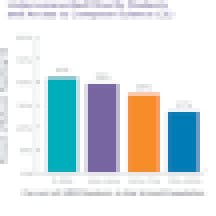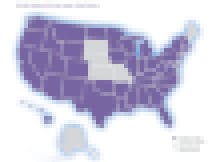Talk of education policy—or any policy, for that matter—can often be dry, divisive or both. But when it comes to policy that expands access to computer science education, legislators tend to be interested and in agreement.
That, plus rapid tech adoption by schools and a major push from advocacy organizations, explains why nearly every U.S. state has adopted at least one policy requiring, standardizing or funding computer science education in schools. Across individual U.S. schools, however, computer science instruction is still far from ubiquitous, according to a new report.
Since the nonprofit Code.org began its advocacy work five years ago, the number of states with one or more computer science policies in place increased from 14 to 44. And two of the remaining six states—Missouri and South Dakota—will pass computer science legislation “any day now,” according to Code.org’s chief academic officer Pat Yongpradit.
All these gains, and many others, are detailed in the group’s second annual “State of Computer Science Education” report, which was released Thursday.
For the report, Code.org partnered with the Computer Science Teachers Association (CSTA) and worked with scores of state and local institutions. The aim? To take a census, not a survey, of computer science education policy adoption and implementation across the U.S. The goal was to present a complete picture—not an extrapolation or projection—of the computer science landscape in every single U.S. school.
As a result, the report only measures the states and schools where participation in Code.org’s census was at or near 100 percent. And what it found is that, of the 24 states evaluated, only 35 percent of high schools offer computer science—a “shocking” discovery, Jake Baskin, executive director of the CSTA, tells EdSurge.
For years, “it’s been hard to zero in on an exact number,” Baskin said. “It’s clear we still have a lot of work to do to ensure every student can learn computer science in this country.”
There’s even more work to do at schools with large populations of underrepresented minority students. Code.org found that schools with higher percentages of black and Latinx students, students receiving free and reduced lunch and students from rural areas are less likely to have access to computer science.

Since the 2017 report came out, 33 states have adopted new legislation to increase access to computer science education. Those pieces of legislation fit into one or more of the nine policy recommendations that Code.org offers to states hoping to make computer science fundamental in schools.
The three most commonly adopted policies—the ones that are “natural starting points for states,” Yongpradit said—are funding for professional learning (or teacher training), the development of K-12 computer science standards and requirements that all high schools offer computer science.
States that do adopt these policies see a greater portion of their high schools teaching computer science. The report observed a positive relationship between the number of computer science policies adopted and the percentage of high schools providing computer science instruction. In other words, more policies equals more programs.
A number of states have actually taken that third policy even further, in hopes of introducing computer science to students at an even younger age. Indiana, New Hampshire and Wyoming require all K-12 schools to teach computer science. Florida requires all middle and high schools and Nevada requires it in both elementary and high schools.
Last year, when Code.org released its State of Computer Science Education report, Maryland had not adopted any of those three core computer science policies, Yongpradit said. With the passage of just one bill in the last year, however, the state has hit all three.
In fact, Yongpradit said, by the end of the year, Maryland will have adopted all nine policies Code.org recommends, joining the ranks of just one other state: Arkansas. (Idaho has adopted eight of the nine policies; Virginia and Nevada have each adopted seven.)
So, what about those few remaining states? Missouri and South Dakota are working on flipping from gray to purple on the Code.org adoption map (below). Alaska is also in the process of adopting computer science standards.

And how do states make such rapid progress? “What happens here, in all these states with zero [policies], is computer science doesn’t have a home,” Yongpradit explained. “Then someone whose full time job is something else, hopefully something related, decides, ‘You know what, I’m going to take this on.’ That’s usually the biggest barrier.”
With 50 states and nine possible computer science education policies, the legislation map changes every month, if not every week, Yongpradit said. “We hope this report gets outdated very soon. That means lots of stuff gets changed.”
And with midterms looming this fall, change is afoot for many states—hopefully, forward momentum for computer science, Baskin said.
“I’m really excited, as we head into the big elections across the country, to see how those accelerate the work around computer science education,” he said.


